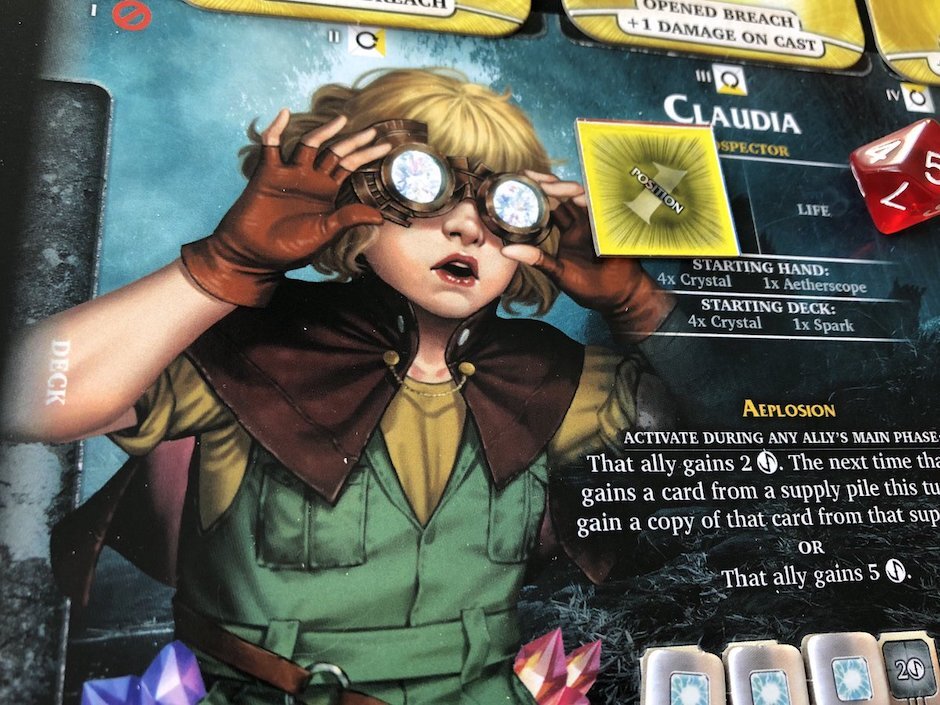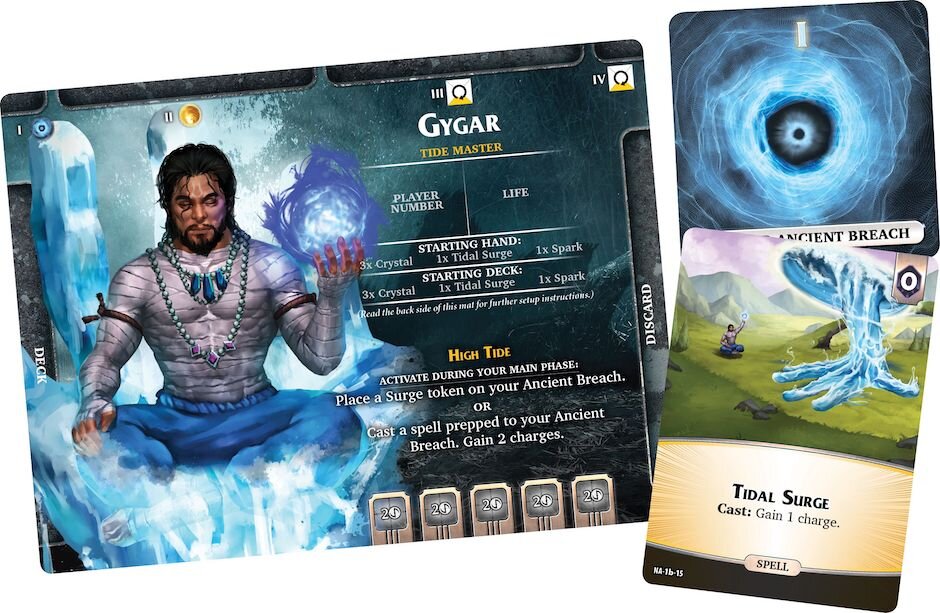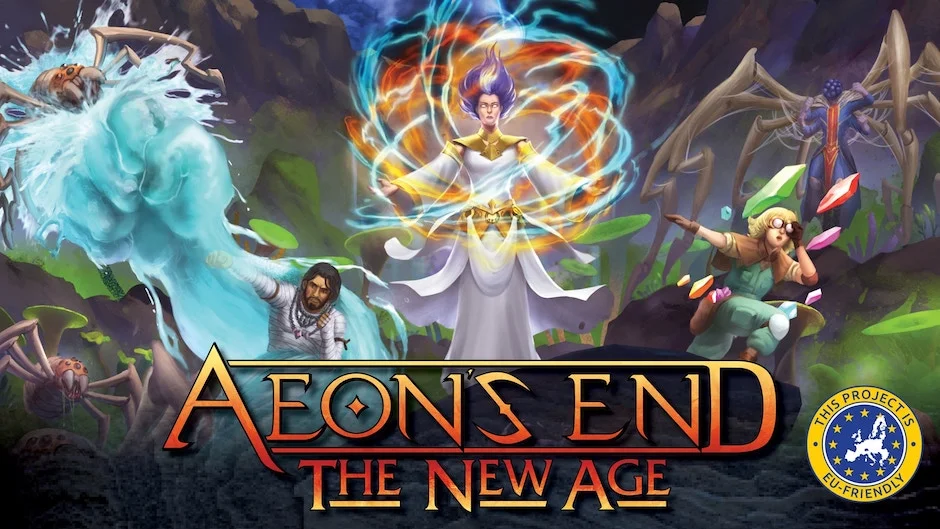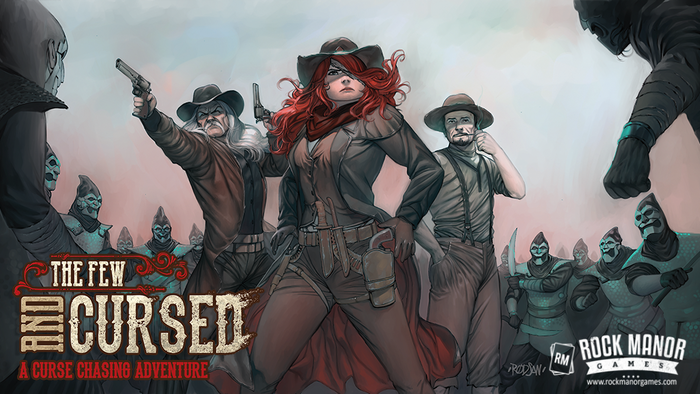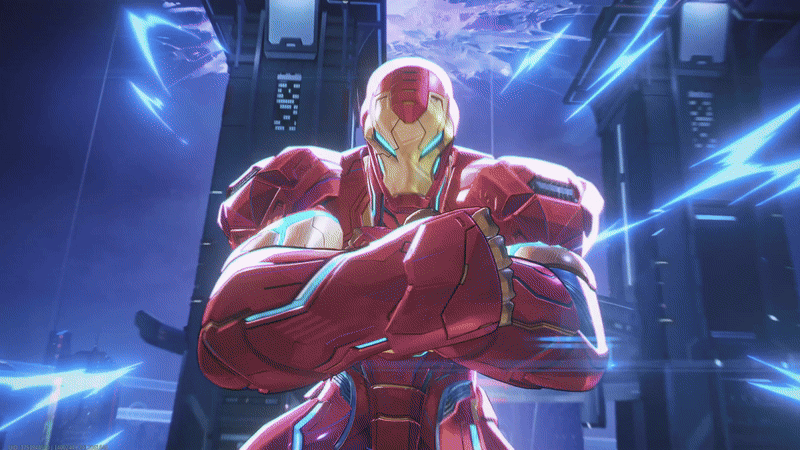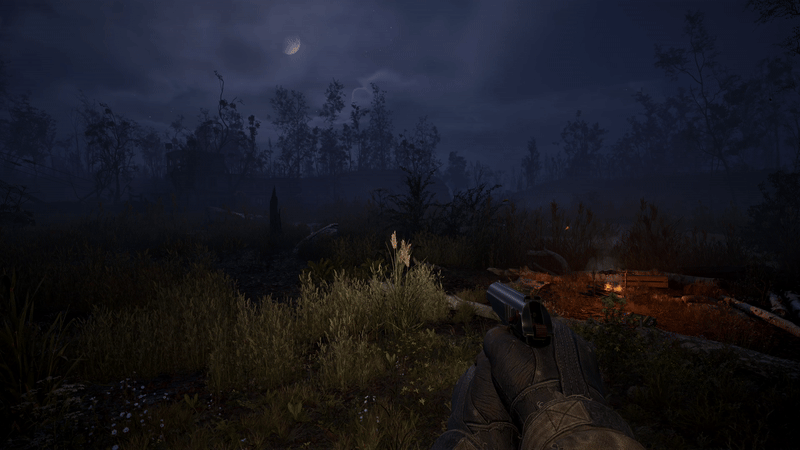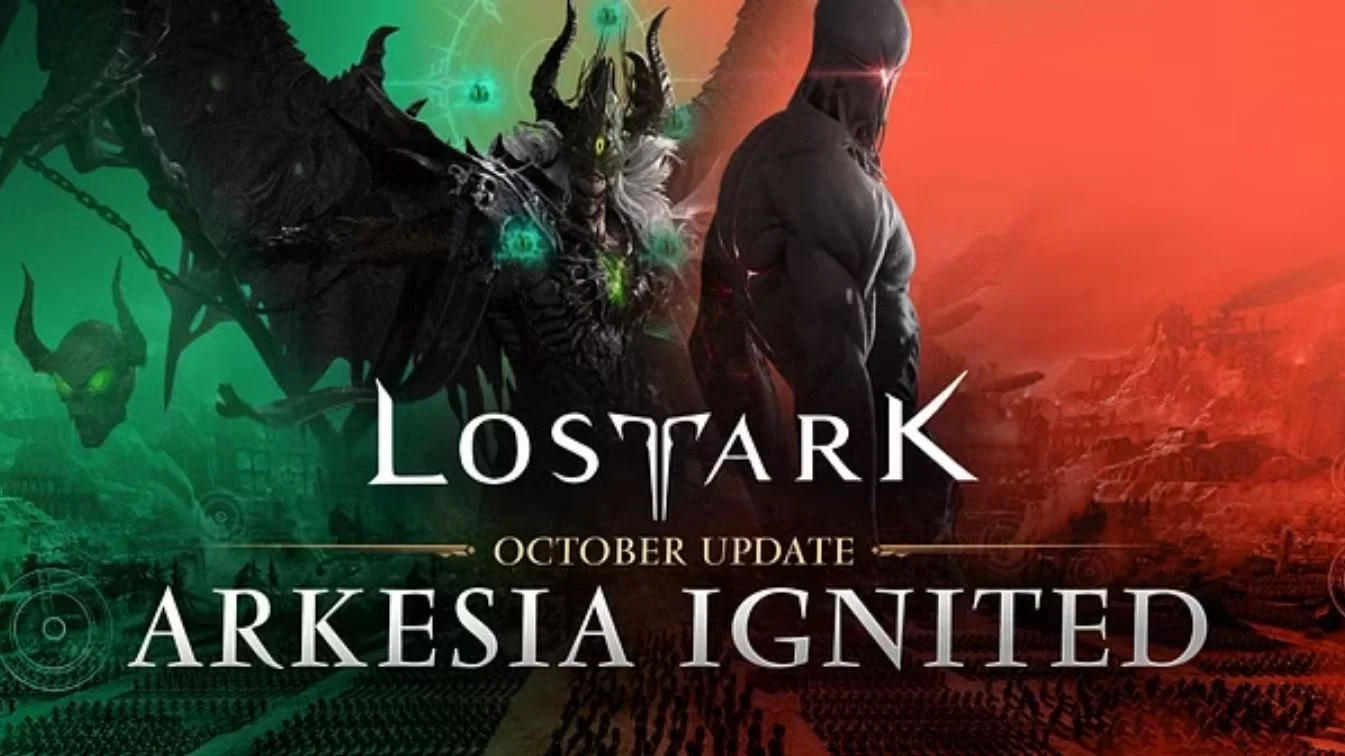Review copy provided by Indie Boards and Cards
Designed by Kevin Riley, Aeon’s End was published by Indie Boards and Cards in 2016 with inventive twists on the deck-building genre. The two mechanisms that modify play in the cooperative tabletop experience are a variable turn order and a set of rules to impress upon players the importance of deck management. Several expansions later, the game has improved upon the original concept and even branched out into other board game genres—Aeon’s End: Legacy was the first cooperative deckbuilding game to feature a legacy campaign, in which characters develop over the course of the narrative.
That innovative streak isn’t over. Aeon’s End: The New Age is another standalone expansion that doesn’t require the original game. But it introduces the Exhibition system, a new feature that brings strong replay value to the entire series of deck-building games, and Gravehold will never be the same.
STORY
The Nameless threaten the safety of Gravehold, and the breach mages are the only ones strong enough to keep the darkness at bay. After the destruction of the original Gravehold, the new settlement flourished on the surface. But even though the greatest threat in history has been vanquished, and the heretical followers of Xaxos have been banished, the Nameless still continue to plague the world. Expeditions of breach mages venture out into the wilderness to locate the source of the Nameless appearances. The courageous men and women have one purpose—protect New Gravehold at all costs.
Aeon’s End: The New Age expands on the lore of the series while also establishing a narrative that makes sense with the new Expedition system. The background of the mages, the immersive scenarios that involve each battle, and the fantasy concepts of breach magic and powerful spells all create a rich atmosphere that enhances the deck-building game.
GAMEPLAY
The Expedition system functions similar to a legacy game or full campaign where cards are divided into labelled decks that should only be opened when instructed to do so and in the proper order. Other than the introduction of campaign cards and a linear narrative, the deck-building game remains mechanically like Aeon’s End and the other expansions that have released.
A player mat describes the powers of each breach mage; decks, discard piles, and the breaches all have designated places around the player mat. The supply has a central location on the table, and the nemesis mat and deck are positioned within easy reach.
The turn order varies based on shuffling. Those cards are the only ones that will be shuffled during the game. The player decks are merely repopulated from the discard pile, which makes the order in which you discard from your hand important, and deck management becomes a valuable factor in your decisions. During a turn, players progress through three phases—casting their prepped spells, using their cards in hand to perform actions, and replenishing their hand by drawing from the deck. A nemesis turn reveals one card from the opposition deck and the resolution of any attacks, powers, or ongoing effects.
Play continues until either the Nameless falls to the breach mages or Gravehold loses all of its health. The nemesis or the city, which one dies first.
The deck-building component and the campaign is well-balanced. Each upgrade card from the supply has a useful function that can either boost your own deck and actions or support an ally. The Nameless are a persistent threat and dangerous foe, but the game never feels overwhelmingly punishing. It’s a surmountable challenge.
The Expedition system reveals new cards for the supply, new breach mages to experiment with, and increasingly powerful Nameless to fight. The story text that accompanies the campaign enriches play and gives a narrative spine to the game.
One complaint would be a lack of components that would facilitate gameplay. Gygar, one of the breach mages, uses Surge tokens to augment his Ancient breach. Those tokens don’t exist and were not included in the box. A small absence, but one that would have been easy to remedy. And there aren’t any tokens to represent aether—the currency of the game. Keeping track of aether was a turn-by-turn action. Including tokens for each of these elements would enhance the gameplay and minimize confusion for any players that are new to the deck-building genre.
The Expedition system of Aeon’s End: The New Age is a thrilling adventure, and it works well. Unlike a legacy game, though, the cards and decks can be reused and replayed after the campaign is finished, which elevates the value of this standalone expansion.
VISUALS
The artwork on the cards is sharp and detailed. The world of Gravehold, the breach mages, and the Nameless are beautifully captured in the illustrations on the cards and the player mats. The fantasy setting is well-established.
REPLAYABILITY
This is where Aeon’s End: The New Age really knocks it out of the park. The Expedition system creates a short campaign in The New Age, but it also adds hours of play to every Aeon’s End game that has released. The decks can all be mixed and matched to create game after game that will play like no other before it. And the other base games and expansions can all be integrated into the Expedition system. Which means this one game modifies multiple others. That’s impressive.
WHAT IT COULD HAVE DONE BETTER
The missing components felt like an oversight that could have been easily anticipated and fixed. It’s a small detractor in what is an otherwise well-designed and excellent game.
VERDICT
Aeon’s End: The New Age offers plays so much. With a campaign in the box and the promise of countless expeditions with other Aeon’s End board games, it will revitalize previous entries in the series and connect the world of Gravehold into one big adventure. It doesn’t matter if you love deck-building games or have never played one. You’ll enjoy Aeon’s End: The New Age.

